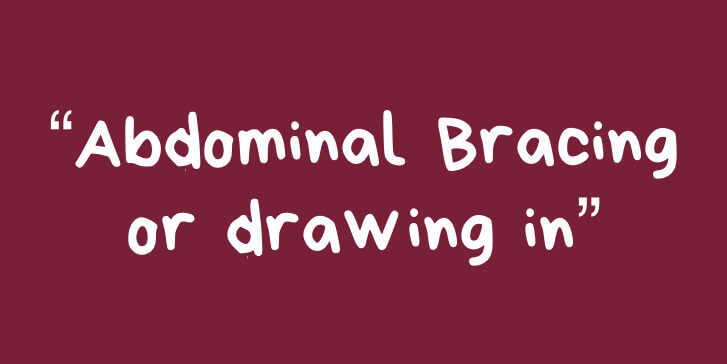Effects of transverse abdominis on SIJ : what do you choose bracing or drawing in
Our views for this article:
Drawing in,” also known as, transverse abdominis (TVA) activation is often the first cue given by a Physiotherapist when guiding an patient through an exercise or movement pattern.
“Bracing” is an alternative approach to lumbar stabilization involving an isometric contraction of both deep and superficial trunk musculature. This article provides evidence indicating that “drawing in” creates a greater degree of sacroiliac joint (SIJ) stability and may assist in reducing low back pain (LBP). Using this information, physiotherapist can improve cuing and exercise selection for those with SIJ dysfunction (SIJD) and Lower back pain
There are numerous conservative exercises and treatment protocols for low back pain. In recent years emphasis has been placed on specific exercises for low back pain along with general exercise. These more specific exercises were developed to target the muscles that are associated with lumbar–pelvic stability with the aim of developing more effective and efficient exercise programs for LBP. In this article we define stability as mechanical control of the joint, including the muscles limiting or controlling unwanted movement, and preventing injuries of ligaments and capsules.
Local vs global
The local muscle system includes deep muscles such as the transversus abdominis and the lumbar multifidus that are attached to the lumbar vertebrae and sacrum and are capable of directly controlling the lumbar segments. By contrast, the global muscle system encompasses the larger and more superficial muscles of the trunk that are more concerned with producing and controlling trunk movements.(for e.g. rectus abdominis and erector spinae).
Conventional exercises generally work to increase the strength of global muscles. The specific exercise program aims to improve deep muscles which are more responsible for providing stiffness (stability) to spine and pelvis during static and dynamic postures.
TA and multifidus have been found to forming deep muscle corset.
Carolyn A. Richardson and colleagues did study to find out effect of activation of TA and MF on SIJ stability.
What they did during study?
Thirteen healthy individuals who could perform the test patterns were included. Sacroiliac joint laxity values were recorded with study participants in the prone position during the two abdominal muscle patterns (1. Abdominal draw –in pattern which activates TA and MF; 2. Conservative brace pattern which activates all abdominal muscles superficial and deep).The values were recorded by means of Doppler imaging of vibrations. Simultaneous electromyographic recordings and ultrasound imaging were used to verify the two muscle patterns.
They concluded that contraction of the transversusabdominis significantly decreases the laxity of the sacroiliac joint. This decrease in laxity is larger than that caused by a bracing action using all the lateral abdominal muscles.
Clinical implementation
The contraction of the transversus abdominis, independently of the other abdominal muscles, affects the laxity of the sacroiliac joints to a larger extent than a bracing action using all of the lateral abdominal muscles. Exercises for lower back and SIJpain should incorporate a precisely controlled contraction of the transversus abdominis independently of the global muscles.
Referances;
The Relation Between the Transversus AbdominisMuscles, Sacroiliac Joint Mechanics, and Low Back Pain Carolyn A. Richardson, PhD, Chris J. Snijders, PhD, Julie A. Hides, PhD, Le´onie Damen, MSc, Martijn S. Pas, MSc, and Joop Storm, BSc.


Leave a Reply
Want to join the discussion?Feel free to contribute!